The AMD Radeon VII Review: An Unexpected Shot At The High-End
by Nate Oh on February 7, 2019 9:00 AM ESTRadeon VII & Radeon RX Vega 64 Clock-for-Clock Performance
With the variety of changes from the Vega 10 powered RX Vega 64 to the new Radeon VII and its Vega 20 GPU, we wanted to take a look at performance and compute while controlling for clockspeeds. In this way, we can peek at any substantial improvements or differences in pseudo-IPC. There's a couple caveats here; obviously, because the RX Vega 64 has 64 CUs while the Radeon VII has only 60 CUs, the comparison is already not exact. The other thing is that "IPC" is not the exact metric measured here, but more so how much graphics/compute work is done per clock cycle and how that might translate to performance. Isoclock GPU comparisons tend to be less useful when comparing across generations and architectures, as like in Vega designers often design to add pipeline stages to enable higher clockspeeds, but at the cost of reducing work done per cycle and usually also increasing latency.
For our purposes, the incremental nature of 2nd generation Vega allays some of those concerns, though unfortunately, Wattman was unable to downclock memory at this time, so we couldn't get a set of datapoints for when both cards are configured for comparable memory bandwidth. While the Vega GPU boost mechanics means there's not a static pinned clockspeed, both cards were set to 1500MHz, and both fluctuated from 1490 to 1500MHZ depending on workload. All combined, this means that these results should be taken as approximations and lacking granularity, but are useful in spotting significant increases or decreases. This also means that interpreting the results is trickier, but at a high level, if the Radeon VII outperforms the RX Vega 64 at a given non-memory bound workload, then we can assume meaningful 'work per cycle' enhancements relatively decoupled from CU count.
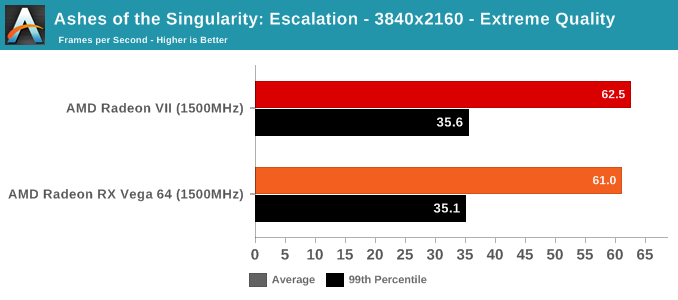
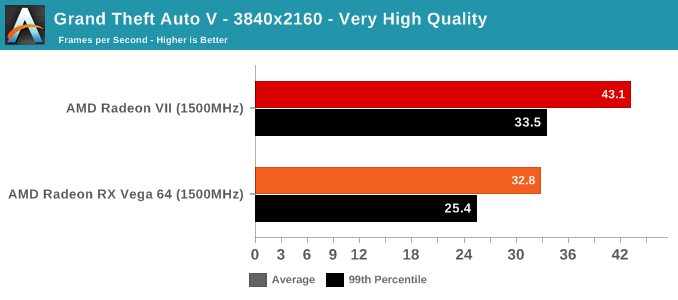

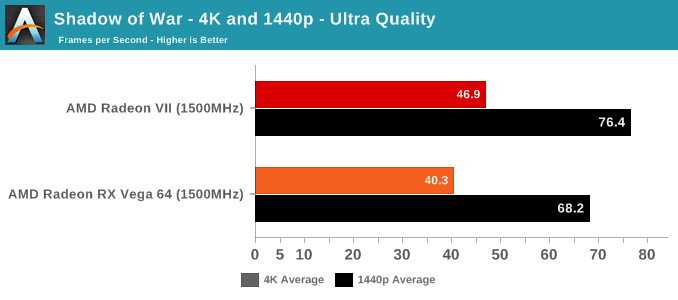
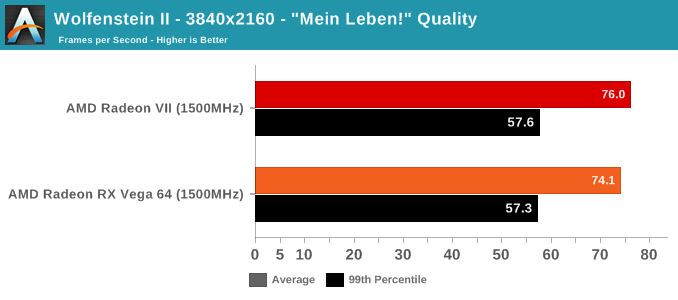
As mentioned above, we were not able to control for the doubled memory bandwidth. But in terms of gaming, the only unexpected result is with GTA V. As an outlier, it's less likely to be an indication of increased gaming 'work per cycle,' and more likely to be related to driver optimization and memory bandwidth increases. GTA V has historically been a title where AMD hardware don't reach the expected level of performance, so regardless there's been room for driver improvement.

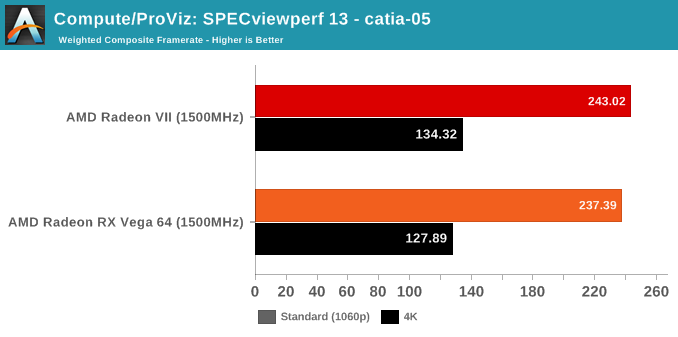
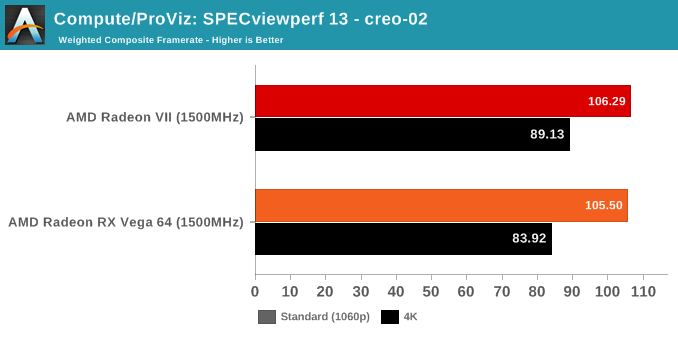
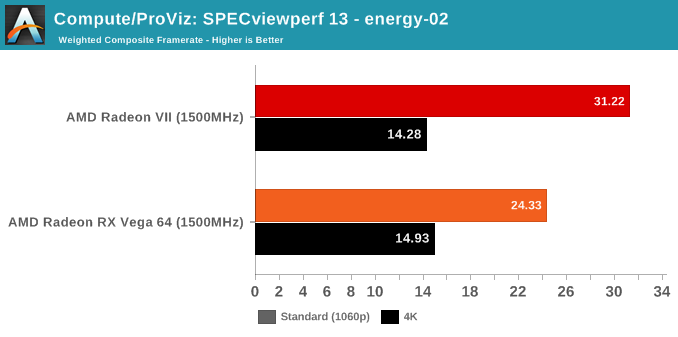
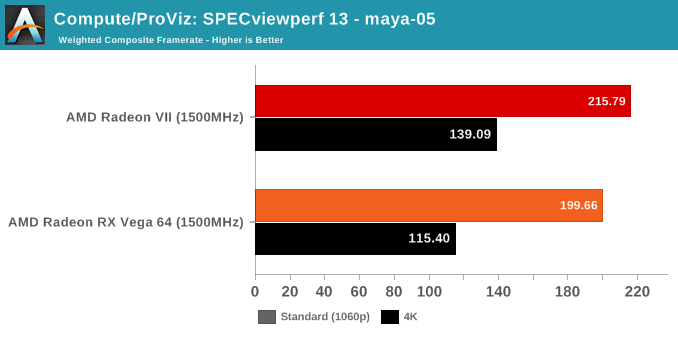
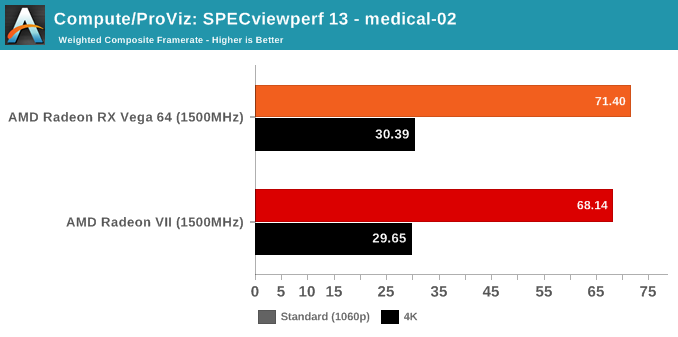


SPECviewperf is a slightly different story, though.
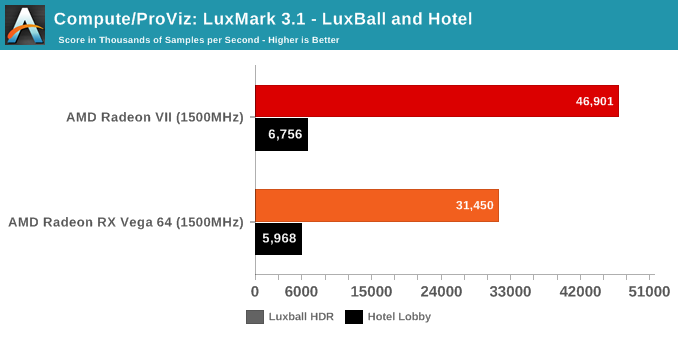
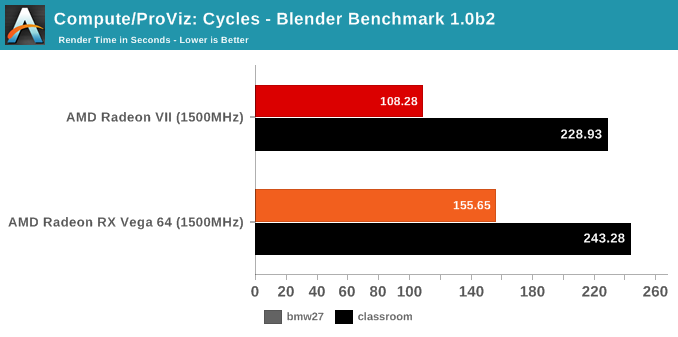
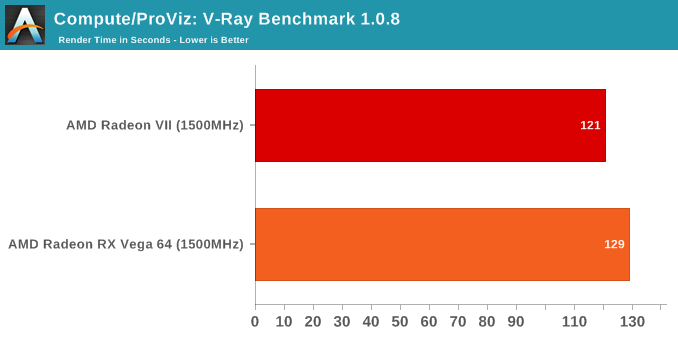
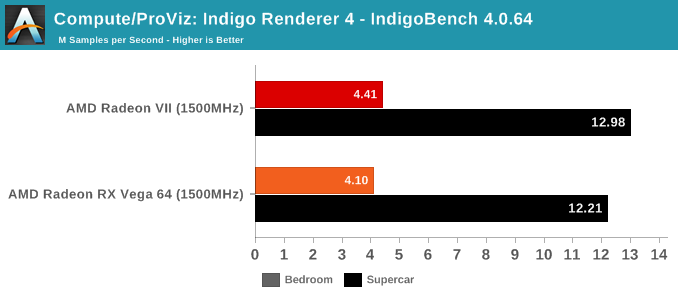










289 Comments
View All Comments
eddman - Tuesday, February 12, 2019 - link
Just to clarify my comment; there was no proof that nvidia deliberately implemented the tessellation feature badly to cripple AMD.just4U - Thursday, February 7, 2019 - link
At the moment I am not concerned about the drivers. This card comes in at pretty impressive numbers.. looks to be slightly better than the 1080ti but with 16G of mem.. and not cheap mem either so it will be useful in a few years (likely) I want one!!cmdrdredd - Thursday, February 7, 2019 - link
Slightly better than 1080ti which is what 3 years old now? Not impressedjust4U - Thursday, February 7, 2019 - link
Which is pretty much the state of affairs regardless is it not cmd? Are you majorly impressed with the 2080ti??? it's only marginally faster than the 3 year old 1080ti as well.I own 1080s and vega56s. Those vega56s would be a huge upgrade if I went to the new Vega. The 1080s? Meh.. yeah a little .. not much.. not worth the upgrade.
LogitechFan - Friday, February 8, 2019 - link
it's 30% on average. if this is only marginally better for you, then of course you deserve an amd card :Deddman - Friday, February 8, 2019 - link
... for a 43% higher launch MSRP, or if we compare it to the currently cheapest 2080 Ti at $1150, 64%.This is one of the worst generational launches so far, where price/performance actually went DOWN.
Gastec - Tuesday, February 12, 2019 - link
Time is relative. What if Nvidia and everybody else would choose to release a new generation every 5 years? Most so-called gamers in the World don't even have the "old" GTX 1080Ti.kostaaspyrkas - Sunday, February 10, 2019 - link
you are totally right...i wonder why no reviewer ever says that... its been many times proven that all radeon cards 6 months after release always take lead from their nvidia competitors...nvidia leads in older games...amd future proof...i dont buy a 700 euro card for 1 year..i keep its 3 plus years at leastGastec - Tuesday, February 12, 2019 - link
That's the difference between you and these tech reviewers and their accompanying "unbiased" trol...I mean bragge...commentators, COMMENTATORS! They "upgrade" to the latest and greatest each new generation :)boozed - Thursday, February 7, 2019 - link
I was underwhelmed at its launch because it seemed like just a speed bump; on paper, it didn't seem that impressive.I am now suitably whelmed.